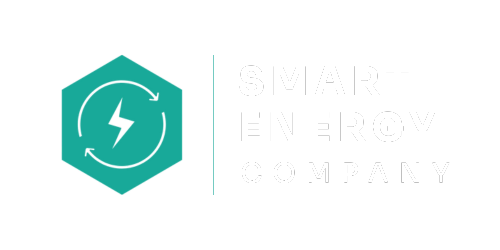Nuclear RAB Levy Update: What Suppliers Are Actually Doing & What You Need to Ask
As the levy goes live, suppliers are handling it differently. Here's what to look out for.
Quick recap: If you're new to this, the Nuclear RAB Levy is a government-mandated charge that started on 1st November 2025 to fund nuclear infrastructure like Sizewell C. Read our full explainer here →
But here's what we've discovered since publication: not all suppliers are implementing the levy the same way. This follow-up guide walks you through what's actually happening, what questions to ask, and what to watch for when your bills update.
📊 How Suppliers Are Handling the Levy Differently
We've been speaking with major suppliers and reviewing real bills. What we're seeing is that implementation is not uniform. Here are the key differences:
Embedded in Unit Rates (Not Itemised Separately)
Some major suppliers are including the Nuclear RAB Levy within the unit rate rather than showing it as a separate line item on bills. We've confirmed this approach with suppliers like Valda Energy, who explicitly stated the levy would be embedded from December 2025. This means:
- You see a unit rate increase, but you don't see the levy broken out
- It's harder to audit exactly what portion of your increase is the mandatory government charge versus supplier discretion
- The actual levy component becomes invisible once it's on your bill
Forecasting Beyond Published Rates
Because the Low Carbon Contracts Company (LCCC) only publishes the levy on a quarterly basis, suppliers quoting fixed prices have to forecast beyond the published period. Here's what's happening:
- The published levy rate is set quarterly (current rate: £3.455/MWh or 0.3455p/kWh)
- Seasonal forecasts suggest it will vary between £3.50/MWh (winter) and £4.50/MWh (summer) through March 2027
- Suppliers building fixed-rate quotes are averaging or conservatively estimating future rates to avoid having to change bills mid-contract
- This means quoted rates are often higher than the current published rate
Transparency Varies Significantly
Some suppliers will break out the levy component if you ask directly. Others are less transparent about it. The practical problem: it's difficult to compare quotes between suppliers if one supplier shows the levy separately and another buries it in the unit rate.
⚠️ Why This Matters for Your Business
- You can't easily audit the real cost. If you can't see the levy separately, you can't verify that the supplier is charging you the actual government levy and not building in additional margin.
- Quote comparison is harder. When comparing renewal quotes from different suppliers, you're comparing total unit rates—which makes it almost impossible to isolate the levy cost and compare like-with-like.
- Forecasting buffer isn't transparent. Suppliers may be forecasting conservatively (which protects them and you, but costs you more upfront), or they may be building in additional buffer. You won't know unless you ask.
- For pass-through contracts, the distinction matters. If you're on a pass-through or variable contract, you have the right to know exactly what government charges are being passed on, separately from any supplier margin.
❓ Questions to Ask Your Supplier Right Now
If you're on an existing contract or renewing soon, use this checklist when you speak to your supplier:
💷 What to Look For When Comparing Renewal Quotes
When you're ready to renew or switch suppliers, here's how to compare quotes properly despite the levy complexity:
1. Request the Levy Component Separately
Ask suppliers to break out the Nuclear RAB Levy component in writing, even if it's embedded on bills. This gives you an apples-to-apples comparison.
2. Compare Unit Rate Excluding the Levy
Once you know the levy component, subtract it from the quoted unit rate to see the true energy cost each supplier is offering. This is what you should actually be comparing between suppliers.
3. Look at Forecasting Transparency
Ask suppliers to explain their forecasting assumptions. Are they using the lowest published rate? The midpoint? The upper forecast? A buffer beyond forecasts? The most transparent supplier often reflects their confidence in their pricing.
4. Check Standing Charges Separately
The Nuclear RAB Levy does not apply to standing charges —only unit rates. If a supplier is quoting a standing charge increase citing the levy, that's not accurate and you should query it.
5. For Large Users, Run the Numbers
If you use significant volumes, the difference between 0.3455p/kWh and 0.46p/kWh (or higher) compounds quickly. Use actual consumption figures to calculate annual impact.
- At published rate (0.3455p/kWh): £3,455/year
- At Valda's quoted rate (0.46p/kWh): £4,600/year
- Annual difference: £1,145
🏭 If You're EII-Exempt: Critical Action Points
If your business holds an Energy Intensive Industries (EII) exemption certificate, you should not be paying the Nuclear RAB Levy at all. But you need to be proactive to ensure this happens correctly.
What You Need to Know
- Some suppliers are including the levy in rates and then reconciling (reimbursing) it to you later rather than excluding it upfront
- The reconciliation process varies by supplier—some do it monthly, others annually
- You need to ensure your exemption certificate is current and properly registered with your supplier
Your Action Checklist
Need help with EII exemptions? Read our comprehensive guides:
EII Certificates: Cut Levies & Get Network Relief →Understanding the EII Support Levy & Network Compensation →
📈 The Bigger Picture: Multiple Levies Coming at You
The Nuclear RAB Levy isn't arriving in isolation. Your business is being hit by multiple government charges:
| Charge | Current Rate | Effective Date | Impact |
|---|---|---|---|
| Nuclear RAB Levy | 0.3455p/kWh (rising to ~0.45p/kWh by summer 2027) | 1st November 2025 | Adds ~£340/year per 100 MWh |
| EII Support Levy | 0.15p/kWh | Already live (April 2024) | Adds ~£150/year per 100 MWh |
| TNUoS Standing Charge Increase | Rising by average 94% in some regions | 1st April 2026 | Varies by region; can add £500–£5,000+ annually depending on location |
Combined impact by November 2025: Businesses are seeing unit rate increases of nearly 0.5p/kWh just from government levies, before you factor in actual energy price movements or supplier margins.
Learn about TNUoS standing charge increases:
TNUoS Standing Charges: What's Coming in April 2026 →✅ The Bottom Line
The Nuclear RAB Levy is real, it's hitting bills now, and it's non-negotiable. But how suppliers are implementing it varies significantly —and that variation can cost you real money.
The levies themselves are government-mandated and identical across suppliers. But the unit rates they're quoting? Those can differ substantially depending on forecasting methodology, transparency, and how they're embedding or displaying the levy.
Don't assume all quotes are equivalent. Dig into the detail, ask the right questions, and make sure you understand exactly what you're being charged and why.
Need Help Navigating This?
If you're unsure how your supplier is handling the levy, want to review your contract, or need help comparing renewal quotes to identify the best value, we can help.
Our team can decode your supplier's approach, break down the levy component, and help you avoid overpaying.
Call: 0151 459 3388 Email: info@smart-energy.uk📚 Related Reading & Resources
Found this helpful? Share it with your business network.
Questions or need expert guidance on your energy costs?
📞 0151 459 3388 | ✉️ info@smart-energy.uk
Smart Energy Company | UK Business Energy Broker | Liverpool
Explore More Energy Insights
Stay informed with the latest market updates, supplier news, and industry changes affecting your business
Read our latest energy market insights and expert analysis
Your weekly energy market summary and price movements
Comprehensive monthly energy market trends and forecasts
Current deemed rates and how to avoid expensive bills
Latest news from UK energy suppliers and market changes
Important regulatory and industry updates for businesses
Found This Helpful?
Share this insight with your business network



